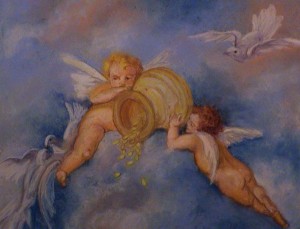As I prepare for graduation, and complete my thesis grant, I launch my second career as an art therapist. I’m still an artist, producing my own corpus of work with a beginner’s mind.
Thanks to my loving son, Mason, for helping me enter the digital world, and share my vision. As I travel this new professional path, I will post new works, and findings along the way. Thanks for looking in on this new chapter. Enjoy.
gretchen@gretchengrant.net
Personal Statement of Gretchen Gullicksen Grant
For the last seven years I have been working with veterans, both in Los Angeles, San Francisco, and San Bruno. But this population has been apart of my work since high school in the 70’s. When no one welcomed our Viet Nam vets home, I did. When no one listened to their stories of war, I did. When no one helped them settle back into civilian life, I did.
After raising two healthy productive children of my own, I went back to school to become an art therapist. As I finish my master’s in Marriage and Family Art Therapy (May 2014), I understand the lack of research available that supports the efficacy of art therapy for traumatic experience. I am still an active volunteer, seeking to remedy this discrepancy.
My thesis grant outlines a sixteen-week program that uses Gestalt group therapy (with art experiences) and Talwar’s (2007) Art Therapy Trauma Protocol to treat PTSD. This bilateral exercise and Gestalt group work are exciting on two levels. First, from a neurobiological perspective, the bilateral stimulation may help move somatic traumatic memories into the semantic areas of the brain, making it available for cognition and thus self-regulation. Secondly, from a didactic perspective, it is client-centered, stimulating intrinsic motivation, with the potential to generate behavioral change by increasing awareness through psycho-educational and psycho-social encounters. I am very interested in implementing a pilot program to research its efficacy for treating PTSD in veterans. My goal is to create a manual for use by the DoD,as a means to deliver effective treatment with active duty members, and for the VA, when treating veteran populations.
It is important to contribute to the growing body of research on PTSD (Shore, Perry, etc), and especially art therapy. I want to be a part of the new paradigm for mental health services. I especially want to ameliorate the influence that the social model of distress (Heenan, 2006) has on well-being, and implement services to Vietnam-era Veterans, who continue to suffer from PTSD (Rosenheck & Fontana, 2007).
